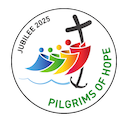DT Curriculum Map Cycle A
DT Curriculum Map Cycle B
Design and Technology Curriculum Narrative
In response to our mixed age classes, our Design and Technology curriculum is implemented through a 2 year rolling programme (Cycle A and Cycle B). This ensures complete curriculum coverage for all our pupils. As children progress throughout the school, they develop their knowledge, skills and understanding through a range of topics and DT activities. By Year 6, all children will have followed our Curriculum Narrative pathway. Design and Technology teaching time is adapted to allow for longer sessions (2 hour lesson alternate weeks) to allow children time to develop and embed their skills and knowledge of DT Threshold Concepts. In response to our classes, which have 2 year groups, teachers adapt the curriculum to ensure all pupils follow progression of threshold concepts relevant to their age.
Design and Technology is a practical and extremely valuable subject. It enables children and young people to actively contribute to the creativity, culture, wealth and well-being of themselves, their community and their nation. It teaches them how to take risks and become more resourceful, enterprising, innovative and capable. It encourages them to develop a critical understanding of the impact of design and technology on daily life and the wider world. It also provides excellent opportunities for children to develop and apply valuable judgements of an aesthetic, economic, moral, social and technical nature both in their own designing and when evaluating the work of others.
Our Design Technology curriculum aims to excite and ignite our pupils’ interest in design and technology and prepare them to participate in the development of a rapidly changing world. In each unit of work, they design and make products for a specific need or purpose – solving real and relevant problems within a variety of contexts. Through carefully constructed sequences of learning, they are taught about the world we live in and develop a wide range of skills embedded through the threshold concepts of designing, making, evaluating and problem solving – they are exposed to an abundance of technical knowledge in every lesson.
The curriculum has been carefully created by Primary Subject Leads and Secondary Heads of Department colleagues, who have worked collaboratively to create high quality toolkits to deliver the threshold concepts. An effective Design and Technology curriculum should encompass all of the threshold concepts within the delivery of each project.
Threshold concepts
Design:
- Using research and exploration to identify and understand user needs.
- Identifying and solving design problems.
- Developing specifications to inform the design of innovative, functional and appealing products in a variety of situations.
- Using a variety of approaches to generate creative ideas.
- Developing and communicating design ideas in a variety of formats.
Make:
- Selecting and using specialist tools, techniques, processes, equipment and machinery.
- Selecting and using a wide and complex range of materials, components and ingredients – considering their properties.
- Preparing and cooking a variety of dishes using a range of cooking techniques.
Evaluate:
- Analysing the work of past and present professionals.
- Investigating new and emerging technologies.
- Using a design specification and user feedback to test, evaluate and refine own and others ideas.
- Exploring the impact of design and technology on society and the environment.
Technical Knowledge:
- Understanding and using materials based on their properties and structural performance.
- Understanding how mechanical systems are used in products to change movement and force.
- Understanding how electrical and electronic systems are used and can be powered within products.
- Applying computing and programmable computers to embed intelligence into products.
- Understanding the principles of a healthy and varied diet.
- Understanding seasonality and food sources.
In order to equip children with a breadth and depth of knowledge, the curriculum embeds these threshold concepts through the completion of three projects/units in each year group:
- Cooking and Nutrition
- Design and Make
- Stretch
In EYFS, pupils will be introduced to Cooking & Nutrition by preparing and tasting a range of fruits. Design skills will be developed through junk modelling, providing opportunities to use a range of motor skills.
As they move into KS1, pupils will further develop their design skills while making moving pictures; simple mechanisms will be introduced and motor skills will be honed while using tools and making simple devices. Vegetable broth will be made, allowing them to investigate food sources and origins. Pupils will learn to investigate food sources and origins while preparing their own sandwiches. A communal patchwork piece will be created, allowing them to develop textile skills, focusing upon modelling and product knowledge.
On entering KS2, the pupils will further develop their design skills, while developing their own packaging, assembling, joining and combining skills will be further developed, whilst children design and create their own creative shoes, plan and design fairground rides. They will be introduced to programming via micro-bit technology, as well as bridge building challenges in upper KS2. Fruit crumbles, pasta sauces, pretzels and vegetable curry will all be made during food and nutrition lessons. Pupils will learn more about recipe adaptation while further developing their food hygiene and preparation skills, as well as understanding the safe use of a heat source. Sewing skills will be developed during the stretch project, focusing upon different types of stitch and applique techniques.
Each project has been specially designed to provide children with the wide range of skills and technical knowledge needed to allow them to succeed and thrive in Design Technology. Materials have been designed to ensure clarity and consistency of delivery to ensure an agreed standard. Threshold concepts are sequenced to be revisited at least once within each key stage to ensure that knowledge is built upon and developed through retrieval and skill practise. Recall is a feature of theory sessions, developing student’s ability to transfer skills between projects and different media.

